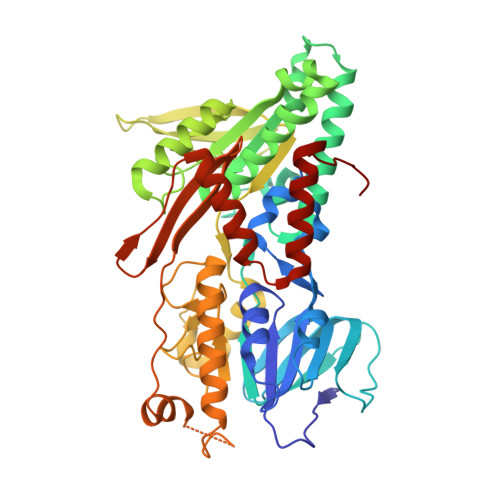The structure of the yeast NADH dehydrogenase (Ndi1) reveals overlapping binding sites for water- and lipid-soluble substrates.
Iwata, M., Lee, Y., Yamashita, T., Yagi, T., Iwata, S., Cameron, A.D., Maher, M.J.(2012) Proc Natl Acad Sci U S A 109: 15247-15252
- PubMed: 22949654
- DOI: https://doi.org/10.1073/pnas.1210059109
- Primary Citation of Related Structures:
4G9K, 4GAP, 4GAV - PubMed Abstract:
Bioenergy is efficiently produced in the mitochondria by the respiratory system consisting of complexes I-V. In various organisms, complex I can be replaced by the alternative NADH-quinone oxidoreductase (NDH-2), which catalyzes the transfer of an electron from NADH via FAD to quinone, without proton pumping. The Ndi1 protein from Saccharomyces cerevisiae is a monotopic membrane protein, directed to the matrix. A number of studies have investigated the potential use of Ndi1 as a therapeutic agent against complex I disorders, and the NDH-2 enzymes have emerged as potential therapeutic targets for treatments against the causative agents of malaria and tuberculosis. Here we present the crystal structures of Ndi1 in its substrate-free, NAD(+)- and ubiquinone- (UQ2) complexed states. The structures reveal that Ndi1 is a peripheral membrane protein forming an intimate dimer, in which packing of the monomeric units within the dimer creates an amphiphilic membrane-anchor domain structure. Crucially, the structures of the Ndi1-NAD(+) and Ndi1-UQ2 complexes show overlapping binding sites for the NAD(+) and quinone substrates.
Organizational Affiliation:
Division of Molecular Biosciences, Imperial College, London, United Kingdom.
















